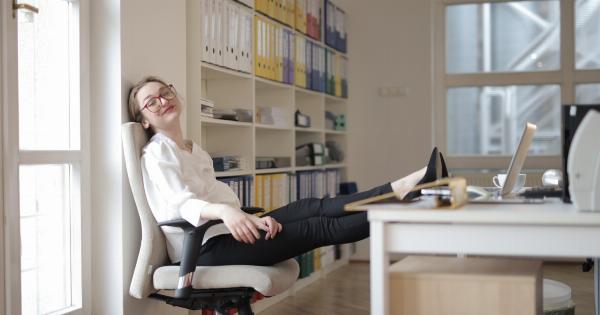Flip flops, also known as thongs or sandals, have become a popular choice of footwear for many people, especially during the hot summer months.
Their casual and laid-back style, combined with their convenience and comfort, make them a go-to option for trips to the beach or casual outings. However, as with any footwear, there are potential risks associated with wearing flip flops that many people may not be aware of.
1. Lack of Support
One of the greatest drawbacks of flip flops is their lack of support. Unlike shoes or sneakers that offer arch support and cushioning, flip flops typically have very flat soles and minimal footbed support.
This lack of support can lead to a variety of foot problems, including arch pain, plantar fasciitis, and even stress fractures.
2. Increased Risk of Trips and Falls
Due to their design, flip flops often have a loose and unstable fit. The lack of straps or a secure closure system can cause the foot to slide around, increasing the risk of trips and falls.
This is especially true when walking on uneven surfaces or stairs. Studies have shown that wearing flip flops can greatly impair balance and stability, putting individuals at a higher risk of injury.
3. Bacterial and Fungal Infections
Flip flops expose a large portion of the foot to the environment, making them more susceptible to bacterial and fungal infections.
The open design allows dirt, sand, and other debris to easily enter the shoe, leading to potential infections like athlete’s foot or toenail fungus. Additionally, the warm and moist environment created by prolonged wear of flip flops can contribute to the growth of bacteria and fungi.
4. Lack of Protection
Unlike closed-toe shoes or sneakers, flip flops offer minimal protection for the feet. The exposed nature of the foot in flip flops leaves it vulnerable to various hazards, such as stepped-on objects, sunburn, cuts, and scrapes.
Without proper coverage and protection, the feet are more susceptible to injuries and discomfort.
5. Foot and Leg Pain
The lack of cushioning and support in flip flops can lead to foot and leg pain, especially when worn for prolonged periods or during activities that require a lot of walking or standing.
The absence of shock absorption can put excessive strain on the feet and lower limbs, causing discomfort and fatigue. Over time, this can contribute to the development of conditions like heel pain or shin splints.
6. Toe Deformities
Continuous wear of flip flops can contribute to the development of toe deformities, such as hammertoes or bunions.
The constant gripping motion required to keep flip flops in place can cause the toes to become misaligned or forced into unnatural positions. This can result in pain, swelling, and difficulty wearing other types of shoes in the future.
7. Sunburn
Flip flops leave the tops of the feet exposed to the sun’s harmful UV rays. Prolonged exposure to the sun without proper protection can lead to painful sunburns and increase the risk of skin damage, including skin cancer.
It is important to apply sunscreen to the tops of the feet if wearing flip flops for extended periods outdoors.
8. Tendonitis
The lack of support and stability in flip flops can increase the risk of developing tendonitis, an inflammation of the tendons. Tendonitis commonly affects the Achilles tendon, which runs along the back of the ankle.
The repetitive motion of walking in flip flops can strain the tendon and lead to pain, swelling, and difficulty with walking or running.
9. Impact on Posture
Wearing flip flops alters the natural alignment of the feet, which can in turn impact the body’s overall posture.
The lack of arch support and cushioning can cause the feet to pronate (roll inward) or supinate (roll outward), affecting the alignment of the ankles, knees, hips, and spine. Poor posture can lead to muscle imbalances, increased stress on joints, and potential back pain.
10. Driving Hazards
Driving in flip flops can be dangerous due to their loose fit and lack of secure attachment to the foot. The flip flop can easily slip off, get caught under the pedals, or hinder the driver’s ability to properly control the vehicle.
It is recommended to wear closed-toe shoes while driving to ensure optimal safety and control.
While flip flops may provide a convenient and breezy option for casual wear, it is important to be aware of their potential risks.
To minimize the negative effects, consider wearing flip flops in moderation and choosing pairs with proper arch support, cushioning, and a secure fit. Additionally, practicing good foot hygiene and maintaining regular foot care can help prevent infections and address any discomfort or issues that may arise from wearing flip flops.






























